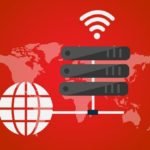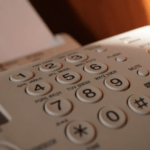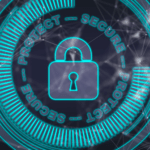Most people use the internet daily, however, they are unaware of the technical details and are therefore at their wit’s ends when some snag develops in the network. 10.0.0.1 is a reserved IP (internet protocol) address that can be used on a client’s device or assigned to network hardware (modem, router etc.) as its default IP address.
10.0.0.1 Admin Login, Password, and IP

Compared to home networks, 10.0.0.1 is generally used in business computer networks. Home networks usually use the 192.168.0.1 or 192.168.1.1 IP address, though 10.0.0.1 can also work efficiently. The 10.0.0.1 IP address is generally used by Xfinity or Comcast routers as well as some Cisco brand routers.
Compared to public IP addresses, the IPV4 addresses are unique and thus, 10.0.0.1 should be unique on a local network. This is probably why, this IP address is preferred to set your individual network, especially in case of any school or company’s local network.
How is private IP address different from public IP address?
Each computer has a public IP address that is allotted to every device connected to the internet using ISP (Internet Service Provider). The public IP address can be accessed by everyone because it can be seen by anyone.
A private IP address is assigned by the router to computers and devices that are connected to any private network. Since the IP address is private it cannot be seen by everyone and can be seen only by computers connected to that network.
Your public IP address is your online ID while the private IP address is a secure way for identification provided to all devices connected to the router through a shared network. You can easily find the public IP address by connecting your computer to the internet.
To look for your router’s private IP address, you can launch the command prompt to enter “ipconfig.” This will give provide you with all your computer’s connections and IP addresses.
Why is having a private IP address important?
The various advantages of having a private IP address include.
- Accessibility – With your router’s IP address you can access the router’s settings page which is useful for all important configurations including information regarding login details of router.
- Configurations – IP address is essential for the routers as they are used to perform essential tasks like configuring default IP for devices connected to the router.
- Troubleshooting – Private IP address is required for troubleshooting purposes. In case you are facing issues with your router and need to resolve the problem, you will need your username and password for the same.
- Control – You can have total control of your router once you have the router’s IP address which is essential especially if you wish to address any problem in the system or connection.
- Security purposes – Knowing the IP address (both private and public IPs) is important for security measures since both are important and can be required for different purposes. Public IP can be required to find out if your IP is being hacked for any undesirable activity.
Connecting to 10.0.0.1 router is easy
Any router that uses the 10.0.0.1 IP address can easily be connected. Open the web browser of your choice (Google Chrome, Mozilla Firefox, Internet Explorer etc.) and open the URL of your router.
Once the router’s web page is loaded, you can request for the router admin console from which you can ask for username and admin password. Using these you can easily connect to the router. To login to 10.0.0.1 you can follow these steps.
- Type http://10.0.0.1 in the address bar of internet browser and press enter.
- Access the router management interface by using your username and password on that page. In case you do not know the username and password, you can find the information from the router model.
Login to Router as Admin
10.0.0.1 is a private IP address as a result of which it can only be accessed locally, behind the router. This restricts the ability to connect to the router directly from the internet or outside the network.
However, there are certain exceptions to this. If the network has a publicly accessible domain name or you are aware of the network IP address, then a dynamic DNS service can be used to get one-way access to the network using any common name and internet.
10.0.0.1 Default Password and Username
Most routers come with a built-in username and password combination that is required to access software as well as make any changes in the network settings.
Once you have installed the router, you should change the username and password for your network’s security. Some of the common username-password combinations for network hardware using 10.0.0.1 IP address include.
- Admin – Password
- [none] – public
- [none] – [none]
- Cisco – Cisco
- Admin – admin
- Cusadmin – highspeed
If you are having trouble connecting to the internet because the default password is not working, you need to reset the router back to default factory settings. Doing so will help you log in using the default username and password.
Keeping default username and password comes handy as these details are available in manuals as well as online. You can use the default password to log in and change the username and password for the router.
Common problems associated with 10.0.0.1 IP address
While working with the 10.0.0.1 IP address, there are several problems that can be encountered by the users. Some of the common issues faced by users include.
Cannot connect to 10.0.0.1
The inability to connect to the internet because of connectivity issues with the router is probably one of the most common 10.0.0.1 IP address problems that users face. This can be caused due to several reasons, however, the most probable reason is that no device on the network uses the 10.0.0.1 IP address.
To address the problem, you can use the ping command in Windows to find out whether any device on the local network is using the 10.0.0.1 IP address. You can do this by opening Command Prompt and typing ping 10.0.0.1.
Connecting to a 10.0.0.1 device that does not exist on your network cannot be reached by ping command. You cannot ping or log in to a 10.0.0.1 device unless it is present in the local network that you are accessing (except DDNS).
10.0.0.1 is not responding
If a device assigned to 10.0.0.1 is not working properly or has suddenly stopped working due to technical failure, it can be due to a problem in the device or the network. there are two ways to address this issue.
Incorrect client address assignment
In case DHCP is set up on the network and 10.0.0.1 address is used then you should ensure that no device uses 10.0.0.1 as the static IP address. If there are two devices having the same IP address, conflict of IP address can result in a network-wide issue for the devices.
Incorrect device address assignment
The 10.0.0.1 router should be set up with a static IP address by the administrator. This address is constant, and clients can use it when they reset the router to default factory settings.
This address is entered in the admin console pages on routers. Business routers use these configuration files and command-line scripts. Mistyping of address or entering the address in the incorrect place might result in the device being unavailable on 10.0.0.1.
Join 25,000+ smart readers—don’t miss out!








